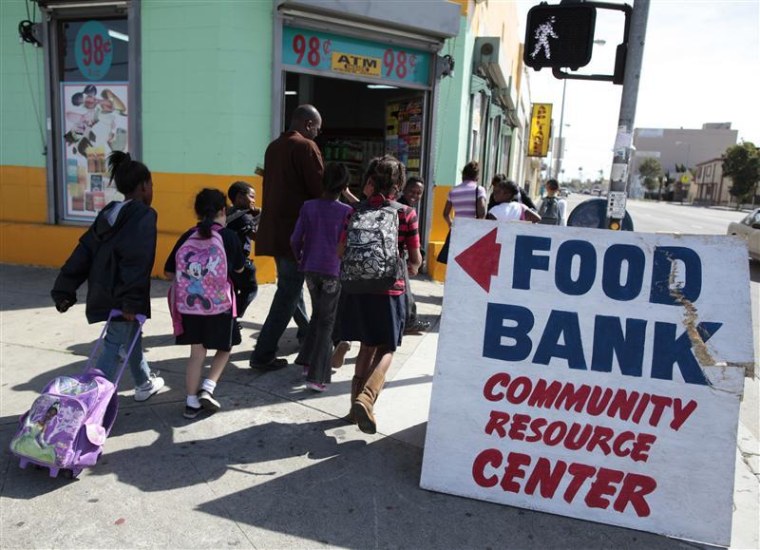Nearly half of all Americans lack economic security, meaning they live above the federal poverty threshold but still do not have enough money to cover housing, food, healthcare and other basic expenses, according to a survey of government and industry data.
The survey, released on Tuesday by the advocacy group Wider Opportunities for Women (WOW), found that 45 percent of U.S. residents live in households that struggle to make ends meet.
That breaks down to 39 percent of all adults and 55 percent of all children, the group found.
"This is a wake-up call for Congress, for our state policy-makers, really for all of us," said Donna Addkison, President and CEO of WOW.
"Nearly half of our nation's families cannot cover the costs of basic expenses even when they do have a job. Under these conditions, cuts to unemployment insurance ... and other programs families are relying on right now would push them from crisis to catastrophe."
The WOW survey compared 2009 pre-tax incomes to a budget of basic and essential monthly expenses for various families that it developed along with researchers at Washington University with funding from the Ford Foundation and W.K. Kellogg Foundation.
For example, in a budget for a family of one worker, it put housing expenses at $688 and food at $244. In a family of two workers with two young children, it assumed housing would cost $821 per month and food $707 a month.
It did not include nonessentials such as vacations, recreation, hobbies, college tuition, and other common expenses of the middle class.
A congressional effort to find $1.2 trillion in spending cuts over 10 years failed on Monday, raising fears that emergency benefits for the long-term unemployed would not be extended when they expire next month.
Other social programs including Medicare are also under threat as lawmakers seek to slash the nation's huge debt.
Some economists said while they agreed that the debt had to the reduced, targeting programs that helped the low income group survive the harsh economic environment was not the correct path to take.
"I am in favor of austerity, but not in this area," said Harm Bandholz, chief U.S. economist at UniCredit Research in New York. "This is the only austerity going on and this is hitting the long-term unemployed. It's not improving the long-term budget situation anyway."
Currently, the poverty threshold for the United States is an annual income of $22,314 for a family of four.
A little more than 15 percent of the country lives at or below that level, and the group wanted to look at the remainder, "many of whom live on the edge and are chronically at risk of financial crisis or falling into poverty."
More than four out of 10 adult women live in households that cannot cover those basic expenses, slightly more than the proportion of men, 37 percent.
That may be because in 2009 women's median earnings were 70 percent of men's median earnings, the group said.
More than 60 percent of single women live in economic insecurity, it added.
"While married women are more likely to have economic security than unmarried women, much of the stability is attained through a husband's earnings or other household income," the group reported, which can put those women in economic jeopardy if their husbands die or lose their job or if the couple divorces.
The group also found "that full-time work fails to provide economic security for 25 percent of adult workers," because of stagnating and falling wages over the last decade.
"A chief cause of economic insecurity is 1970s level wages that fail to cover modern expenses," it said.
While households with two full-time workers can help boost a family's economic security, 22 percent of adults with children who work full-time and have a partner who also has a full-time job cannot cover basic needs.
At the same time, 21 percent of homes headed by a college graduate lack economic security.
"In the past, threats to economic security were supposedly clear -- dropping out of high school, being a single parent or having a large family. In today's economy, we cannot assume we know who lacks security," it said.
